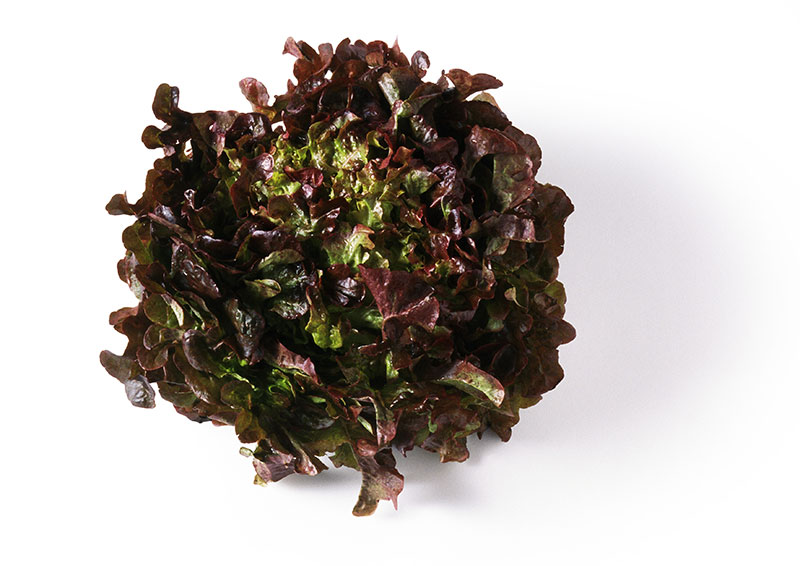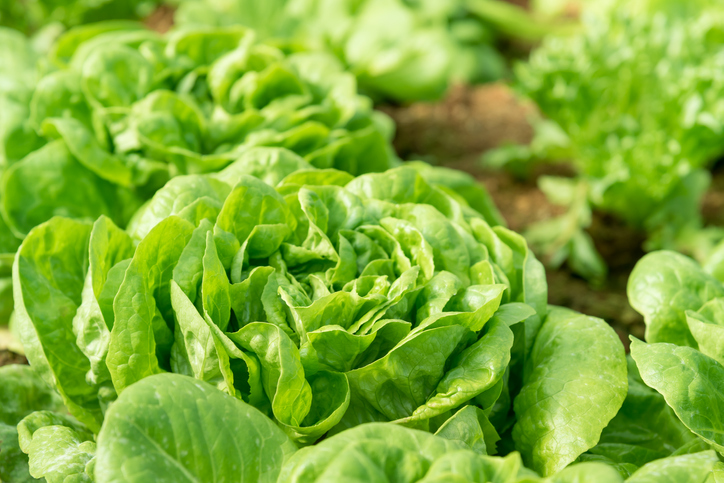Lettuces, Red Leaf

Availability:
Year-round
Availability:
| J | F | M | A | M | J | J | A | S | O | N | D |
Notice:
on demand
Receiving/Storage:
Receiving Information: Good quality leaf lettuce should be fresh, crisp, and well-colored. Avoid lettuce that appears wilted or shows signs of spotting or decay. Avoid leaf lettuce with yellow leaves or with leaves showing cracked ribs. Follow good rotation practices; first shipments received should be used first. Leaf lettuce may exhibit russet (brown) spotting if exposed to ethylene. To prevent russet spotting, keep lettuce away from ethylene-producing fruits and ripening rooms. Storing leaf lettuce at high temperatures may promote rapid deterioration. Rough handling may also promote deterioration of bruised leaves.
Storing leaf lettuce in an area with low humidity may promote wilting. Dried translucent leaves are an indication of freeze damage. Storage/Handling: Temperature/humidity recommendation for short-term storage of 7 days or less: 32„36 degrees F / 0„2 degrees C. Humidity 90_ 98%
Description:
Whole leaves should be crisp with a mild sweet flavor. Long curly dark leaves loaded w/ nutrition, rich in color & texture. Red leaf lettuce does not grow into a head. This vegetable plant is a native to eastern Mediterranean & western Asia. Cultivation of lettuce can be traced back as far as 4500 B.C. at which time it was most likely grown for the oil of its seeds.
Firmly implanted in the Mediterranean basin, lettuce was held in high esteem by the Greeks and Romans, both as a vegetable and as a remedy. Columbus is said to have introduced lettuce into the Caribbean.


